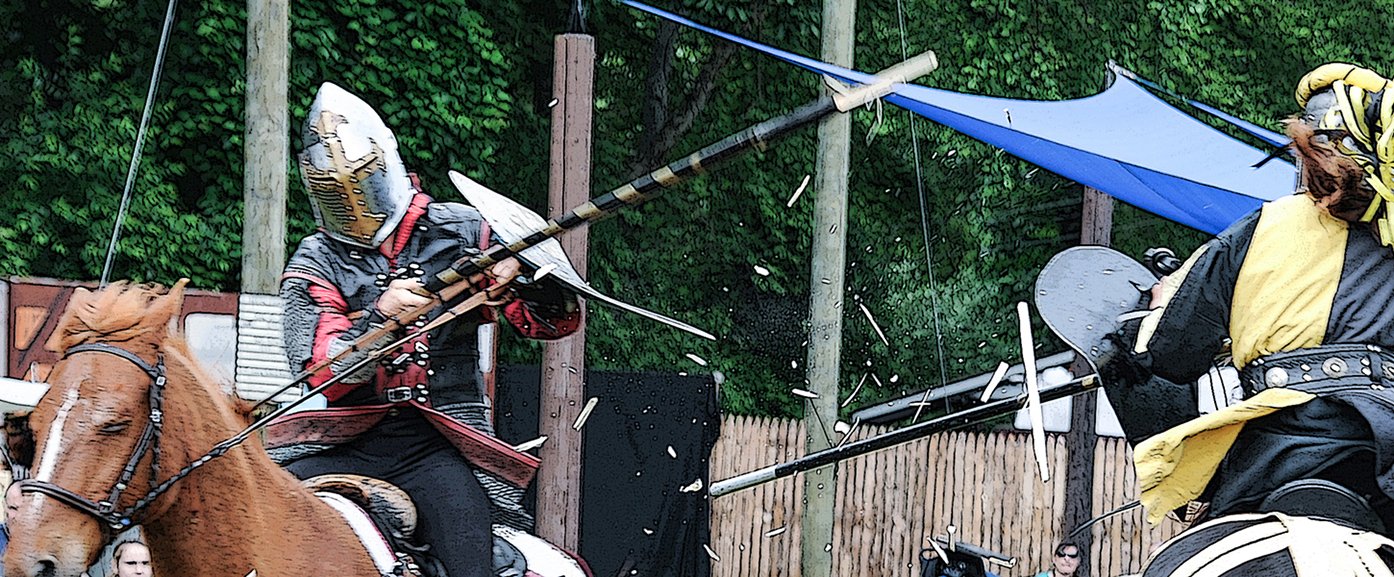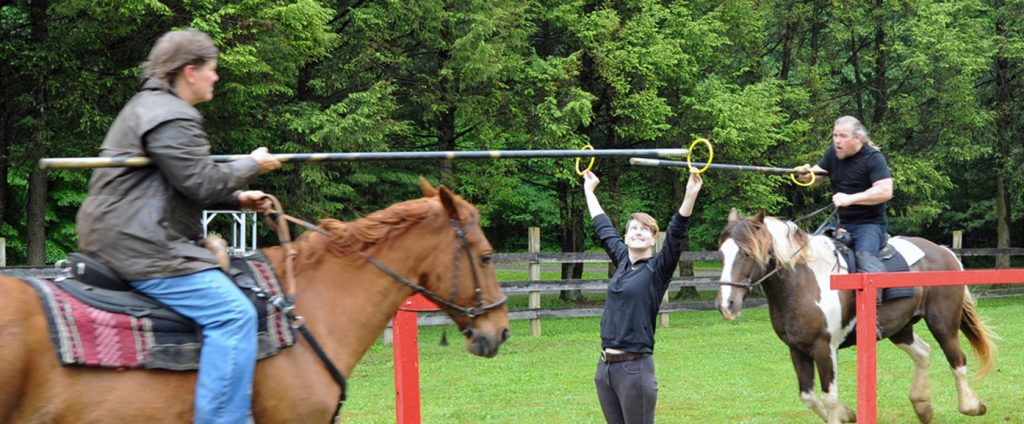
Written by Art Petrosemolo
On cool and drizzly mid-May morning, I found myself driving to a horse farm in Christiana, well south of Garden Spot Village and New Holland. Rob Earhart (brother-in-law of Garden Spot Village’s Scott Miller) and his partner Kate Hopkins had invited me to watch as they put horses and knights through pre-season training for the dozens of Renaissance Faires that take place across the country.
I had always known about the long-running Faire at the Mount Hope Estate and Winery (26 miles west of us just off the Pennsylvania Turnpike) but had never attended. It just didn’t seem like something I would enjoy.
As a matter-of-fact, my first Renaissance Faire was the NJ Faire the first weekend in June when I wanted to see the difference from knight training and the real show.
I have been fortunate to have written about and photographed many different genre of horses, including thoroughbreds and the great American Pharoah’s $1 million + Haskell victory in 2015. I have done Standardbred harness photos from the starting car, mares foaling in the barn, polo ponies and Amish buggy horses. But the jousting horse was new to me.
Beth Brown, a 10-year jousting knight (yup, it’s co-ed and many of the actors behind the helmets are actually horsewomen not horsemen!), explained that jousting horses are about 15 hands (hand = 4-inches), short (cabled) from nose to tail, wide of body and behind. They are quick “like armored jeeps not tanks,” she explained, “and can turn on a dime.”
What she didn’t mention was they are “feisty.” When led to the arena with jousting barriers (called lists), they knew what was happening, as did the six horses in the adjoining paddock who came over to watch and snort.
Earhart, who is a master craftsman blacksmith and forges historic weapons, and has performed as a knight for years, explained that getting a horse trained to run down a barrier at an oncoming horse with a rider pointing a long lance at you isn’t easy. Brown, who was riding her personal joust horse Ranger, an experienced mount, explained that “horses are herd animals used to running together in one direction. To get them to face each other,” said Brown, “can take time.”
To give me an idea of training and so I could get an idea from where I could photograph and not be trampled, Rob and Beth had the horses (Ranger and Banjo) face off at about 50 yards on either side of the barrier. With a hoot and a holler from the riders, the horses shifted into high gear and passed each other with maybe three feet between them.
With lances and shields, but not helmets, the riders practiced touches against stationery and moving targets and then skewered rings held by (a very brave) assistant. Only then, with both horses blowing steam in the cool air, did the riders don their helmets and joust. “The goal,” Rob explained, “is to have your lance touch a small part of the shield (outside upper corner) being held by the opposing rider while he or she does the same. Catching the lance on the upper corner allows the rider to pivot with the hit and keep from being thrown off the horse.”
Each rider, in the Faire’s jousting segments, wears colorful regalia and about 40 pounds of armor and a 12-pound custom, galvanized steel helmet. The horses wear regalia but not armor as they would have in the Middle Ages.
The helmets are heavy, not balanced, and give very limited vision, (I tried one on) but are worn for safety. Although jousting is a theatrical production, as Rob says, things can go wrong very quickly. The goal is to make the joust or battle action-packed and also keep the horses and riders safe.
I positioned myself right at the barrier to photograph a single rider with helmet and lance riding toward me. Rob’s partner Kate had me firmly by the free arm to yank me out of the way if things went south. I then got as close as was safe to photograph the two knights and riders coming at each other. It was pretty exciting and this was just practice.
A joust show at a large Renaissance Fair can have 8-12 riders who joust up to six times a show and do three shows a day. Riders stage falls as part of the action and get bumps and bruises as expected.
The audience loves it and it is one of the most popular parts of any Faire. It was so exciting for me I had to see the real thing two weeks later in New Jersey. My story for the Lititz Record is done and should appear in the next couple of weeks.
